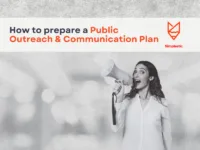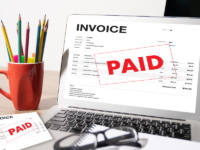Cold emailing is a powerful tool in business communication. A well-crafted cold email template can capture attention and increase response rates. Many professionals struggle to create emails that get noticed, leading to missed opportunities.
Using a clear and concise template helps streamline the process. It allows for personalization while maintaining structure, ensuring that important information is communicated effectively. A strong cold email can open doors to networking, partnerships, or sales.
Learning how to write an effective cold email is essential for anyone looking to succeed in their marketing efforts. The right approach can make all the difference in standing out from the crowd and engaging with potential leads.
Understanding Cold Emails
Cold emails are messages sent to people without prior contact. They aim to establish a connection, offer something of value, or generate interest. Knowing how to write an effective cold email can greatly impact its success.
Definition and Purpose
A cold email is an unsolicited message sent to potential clients or contacts. Its primary purpose is to introduce oneself or a business. Cold emails can serve various goals, like generating leads, networking, or promoting a product or service.
People use cold emails to reach out to others who might not know them yet. This allows for exploring new business opportunities and expanding networks.
Benefits of Using Cold Emails
Cold emails offer several advantages. First, they allow for reaching a larger audience without geographical limits.
Here are some benefits of using cold emails:
- Cost-Effective: Sending emails costs less than traditional marketing.
- Time-Saving: Cold emails can be automated, saving time for busy professionals.
- Personalization: They can be tailored to specific recipients, increasing engagement.
- Scalability: It is easy to scale outreach efforts based on response rates.
These benefits help businesses grow and create valuable connections.
Key Components of an Effective Cold Email Template
An effective cold email has key elements that make it stand out. These components include:
- Clear Subject Line: A brief, catchy subject line grabs attention.
- Personalization: Using the recipient’s name or mentioning a common interest creates rapport.
- Value Proposition: Clearly stating what value the recipient will gain is crucial.
- Call to Action: Encouraging the reader to take a specific action helps drive responses.
By focusing on these key components, a cold email can increase its chances of success and foster connections.
Preparing to Write a Cold Email
Before writing a cold email, it is important to know the audience and gather information about the recipient. This approach helps in creating a personalized message that stands out. Developing a unique value proposition will make the email more appealing and relevant.
Target Audience Analysis
Understanding the target audience is key. This involves knowing who the recipients are and what their needs might be.
- Demographics: Age, job title, and industry can affect how an email is received.
- Pain Points: Identifying specific challenges that the audience faces helps in addressing their needs directly.
- Interests: Knowing what the audience values allows the sender to tailor the message to meet those interests.
By analyzing these factors, the writer can create a focused approach that resonates with the recipient.
Researching the Recipient
Gathering information about the individual recipient is essential. This step builds a connection and shows that the sender has put in effort.
- LinkedIn Profiles: Checking professional backgrounds can provide insight into their career journey and interests.
- Company Website: Learning about the recipient’s company culture and goals helps frame the email content.
- Recent News: Staying updated on recent news related to the recipient can provide conversation starters.
This research will help personalize the message and increase the chances of a positive response.
Crafting a Unique Value Proposition
A unique value proposition is critical for capturing attention. It explains what makes the sender’s offer special and how it benefits the recipient.
- Clear Benefits: Define what the recipient will gain from the offer.
- Specific Examples: Use real-life examples that demonstrate success or effectiveness.
- Conciseness: Keep the proposition brief and to the point.
By highlighting key benefits clearly, the email is more likely to engage the recipient.
The Structure of a Cold Email
A well-structured cold email increases the chances of getting a positive response. Key elements include a compelling subject line, attention-grabbing opening lines, concise body content, and a strong closing statement.
Subject Line Strategies
The subject line is the first thing a recipient sees. It should be clear and engaging. A good subject line sparks curiosity or offers value. Here are some effective strategies:
- Keep it Short: Aim for 5-8 words to ensure it displays well on all devices.
- Be Specific: Clearly state what the email includes to prevent confusion.
- Personalize: Use the recipient’s name or business to create a connection.
- Use Action Words: Prompt the reader to feel like they need to open the email.
Effective subject lines increase open rates significantly.
Opening Lines to Capture Attention
The opening line can make or break a cold email. It should engage the reader immediately and motivate them to continue. Here are some tips:
- Personalize: Reference a mutual connection or recent achievement of the recipient.
- Ask a Question: Start with a relevant question to pique interest.
- State a Fact: Mention a surprising fact or statistic related to their industry.
- Express Gratitude: Thank them for their time upfront.
This approach builds a bridge from the subject line to the main content.
Body Content Best Practices
The body of the email is crucial for conveying information clearly. It should be direct and easy to read. Follow these best practices:
- Use Short Paragraphs: Keep paragraphs to 1-3 sentences. This enhances readability.
- Highlight Key Points: Use bullet points or bold text to emphasize important information.
- Stay Relevant: Provide content that directly relates to the recipient’s needs or interests.
- Include a Call to Action: Encourage the recipient to respond or take a specific action.
This makes the email engaging and actionable for the reader.
Strong Closing Statements
A strong closing statement leaves a lasting impression. It should encourage a response and clarify next steps. Consider these elements:
- Restate Value: Remind the recipient of the benefits they will receive.
- Be Polite: Thank the reader for their time and consideration.
- Provide Contact Information: Make it easy for them to reach out.
- Set a Tone for Follow-Up: Mention a follow-up plan if applicable.
This creates a clear path for continued communication.
Writing the Cold Email
Crafting a cold email requires careful consideration of tone, personalization, and clear calls to action. These elements can significantly enhance the effectiveness of the email and improve the chances of receiving a positive response.
Tone and Language Tips
The tone of a cold email should be friendly yet professional. Using simple and direct language helps the reader understand the message quickly. Phrases like “I hope this message finds you well” add warmth without sounding overly casual.
Avoid jargon that might confuse the reader. Instead, focus on clarity. Use a conversational style to build rapport. Short sentences can make the email easier to read.
Using proper grammar and spelling is crucial. Mistakes can undermine credibility. A well-structured email reflects attention to detail and professionalism.
Personalization Techniques
Personalization can make a big difference in how the recipient views the email. Start by addressing the recipient by their name. This small gesture can create a connection.
Additionally, mention a specific detail relevant to them. This could be a recent project, a shared interest, or something notable about their work.
Creating a tailored message shows genuine interest. This increases the likelihood of engagement. Generic emails often end up ignored.
Effective personalization can turn a cold email into a warm interaction, encouraging a response.
Call to Action Considerations
A clear call to action (CTA) guides the recipient on what to do next. It should be specific and straightforward. Phrases like “Would you like to schedule a call?” are effective.
Make sure the CTA stands out. Use bold text or a separate line to draw attention.
Limiting the options also helps. Instead of asking if they want information, offer a choice between two specific times for a meeting. This makes it easier for them to respond.
A well-crafted CTA can significantly impact the response rate to a cold email.
Optimizing Cold Email Campaigns
To get the best results from cold email campaigns, it is crucial to focus on three key areas: the timing and frequency of emails, the use of A/B testing methods, and tracking metrics and performance. Each of these elements helps improve engagement and effectiveness.
Timing and Frequency
Choosing the right time to send cold emails can greatly influence open rates. Studies show that emails sent on Tuesdays and Thursdays often get the best responses. Early mornings or late afternoons are also good options.
Frequency is important too. Sending too many emails can annoy potential clients, while too few might make them forget about the campaign. A good rule of thumb is to send follow-up emails every 3-5 days. This balance keeps interest alive without overwhelming the recipient.
A/B Testing Methods
A/B testing allows for comparing two versions of an email to find what works best. This can include testing different subject lines, email layouts, or calls to action.
To conduct an A/B test, create two similar emails with minor changes. Send one version to half the audience and the other to the rest. Monitor which version gets higher open and click rates.
This method can reveal what grabs attention and leads to more conversions. Adjustments based on test results enhance future campaigns.
Tracking Metrics and Performance
Monitoring key metrics is essential for understanding a cold email campaign’s success. Important metrics include open rates, click-through rates, and response rates.
Open Rate shows how many recipients opened the email. A low open rate may suggest that the subject line needs improvement.
Click-Through Rate (CTR) measures how many people clicked links inside the email.
Response Rate indicates how many recipients replied. Regularly reviewing these metrics allows for adjustments and optimizations over time. Effective tracking leads to better results in future campaigns.
Troubleshooting Common Issues
Cold emailing can lead to some common problems. Addressing these issues early can help achieve better results. Here are key areas to focus on: low response rates, managing spam filters, and handling negative responses.
Low Response Rates
Low response rates can be frustrating. To improve, one key step is to personalize messages. Including the recipient’s name and specific details increases engagement.
A/B testing subject lines also helps identify what catches attention. Try different approaches to see which works best.
Additionally, timing matters. Sending emails on Tuesdays or Thursdays might gain more responses than Mondays or Fridays.
Lastly, clear calls to action guide the reader to reply. Use prompts like “Let me know your thoughts” to encourage responses.
Managing Spam Filters
Spam filters can block emails, preventing delivery. To avoid this, start by checking the sender address. Use a professional email domain instead of free services that may be flagged as spam.
Crafting the email content also matters. Avoid using excessive links or spammy language. Instead, keep the language clear and professional.
Adding a plain text version can enhance deliverability. Many email services prefer plain text over HTML.
Regularly monitor bounce rates to identify issues. If emails bounce, adjusting content or sender info can help maintain a good reputation.
Handling Negative Responses
Negative responses can be disheartening but are also an opportunity to learn. Start by acknowledging the feedback. A simple “Thank you for your input” shows professionalism.
It’s important to stay calm and not take it personally. Instead, consider if there’s a valid point to improve upon.
Offering a chance for further discussion can show openness. For example, “If you’d like to share more, I’m here to listen.” This may lead to constructive conversations.
Finally, remember that not every response will be positive. It’s essential to view these interactions as part of the process. They can help refine future emails and approaches.
Cold Email Legal Considerations
Cold emailing involves legal responsibilities. Sending unsolicited emails requires awareness of specific regulations and privacy standards to ensure compliance and protect individuals’ data.
Compliance With Regulations
When sending cold emails, it is crucial to follow laws like the CAN-SPAM Act in the U.S. This law outlines several requirements that must be met.
- Obtain Consent: Always obtain permission from recipients before sending emails.
- Clear Identification: Clearly identify the sender’s name and email address.
- Opt-Out Mechanism: Provide a way for recipients to easily unsubscribe or opt-out of future emails.
Failure to comply can result in hefty fines. Companies should also consider regulations in different countries, such as GDPR in Europe, which has stricter rules regarding consent and data use.
Privacy and Data Protection
Privacy is essential in cold emailing. Companies must handle personal data responsibly.
- Data Usage: Understand how and why data is collected and used.
- Data Security: Implement measures to protect data from breaches and unauthorized access.
- Transparency: Be clear about data collection practices in privacy policies.
Keeping these principles in mind helps build trust with recipients and reduces legal risks. Additionally, using a professional email service can aid in managing compliance effectively.
Cold Email Templates
Cold email templates help professionals reach out effectively. The right structure and wording can make a big difference in getting responses. Here are three important templates to consider.
Sales Outreach Template
A sales outreach email should grab attention quickly. Start with a strong subject line that hints at value, like “Increase Your Sales with This Simple Tool.” The opening should introduce the sender and state the purpose.
Next, mention a specific problem that the recipient might face. For example, “I noticed your team struggles with tracking leads.” Offer a brief solution, like, “Our software simplifies lead management.”
Finally, include a clear call to action. Ask for a meeting or a brief chat. Keep the overall length reasonable—five short paragraphs should do the trick.
Partnership Proposal Template
A partnership proposal email needs to convey mutual benefits. Begin with a friendly greeting and introduce the sender’s company. A subject line like “Partnership Opportunity that Benefits Us Both” sets the tone.
Highlight shared goals or values right away. For instance, “We both aim to enhance customer satisfaction.” Present a specific idea for collaboration. This could be joint marketing or resource sharing.
End with an invitation to discuss further. Offer options for meeting times, such as a phone call or video chat. This shows flexibility and eagerness to connect.
Networking Follow-Up Template
A networking follow-up email helps maintain connections. Start with gratitude. A subject line like “Great Meeting You at the Conference” is effective.
Recap the meeting briefly. “I enjoyed our discussion about innovative marketing strategies.” Mention a specific point discussed to jog their memory.
Propose future interactions. “I’d love to dive deeper into our ideas.” Include your availability for follow-up meetings. This fosters ongoing communication and creates opportunities to collaborate.
Final Thoughts
Creating a successful cold email involves understanding the recipient’s needs and interests. A well-crafted email can open doors to new opportunities.
When designing a cold email template, consider the following tips:
- Personalization: Tailor the email to the specific recipient. Use their name and mention relevant details.
- Clear Subject Line: A direct subject line helps grab attention. It should convey the email’s purpose.
- Concise Message: Keep the message brief. Aim for clarity to avoid overwhelming the reader.
- Call to Action: Include a clear next step. This guides the recipient on what to do after reading the email.
Experimenting with different styles can be useful. Tracking responses helps in refining future emails. Small adjustments can lead to better engagement.
Maintaining a friendly yet professional tone is important. This balance can make a significant difference in the recipient’s reaction.
The right cold email can lead to meaningful conversations and connections. With practice and attention to detail, anyone can improve their cold email skills.




